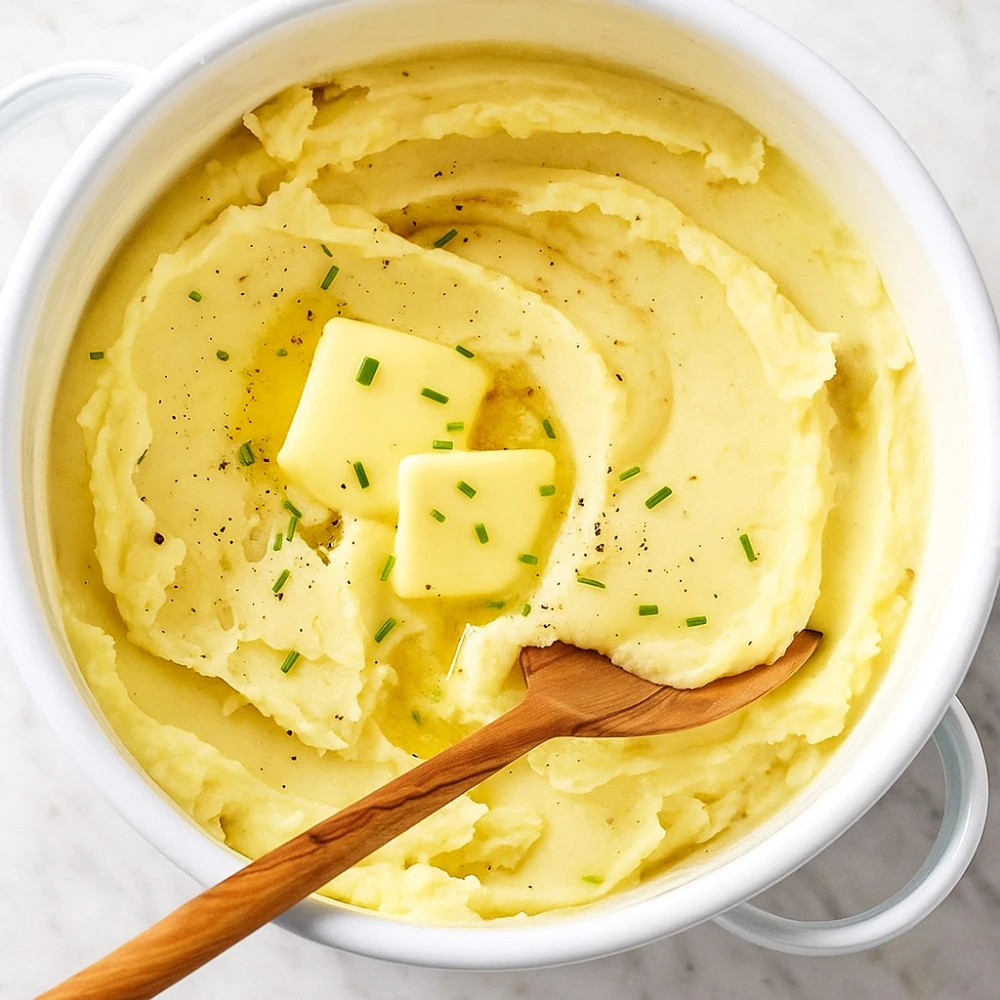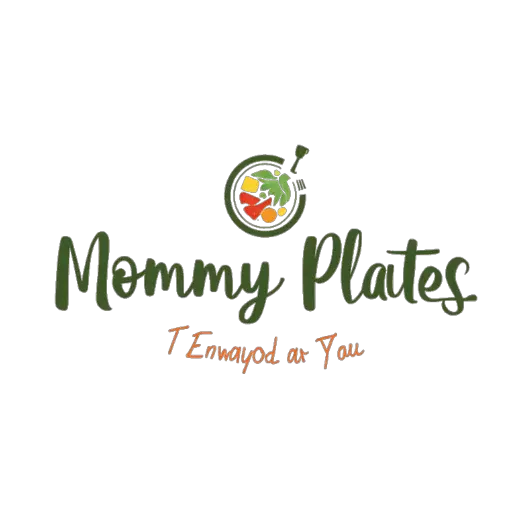The Best Fluffy Pancakes recipe you will fall in love with. Full of tips and tricks to help you make the best pancakes.
The Mashed Potato Masterclass

What makes truly perfect mashed potatoes? Is it the cloud-like texture that melts on your tongue, the rich, buttery flavor that brings comfort with every bite, or the way they seem to elevate every meal they accompany? The answer is all of the above—and more. By the end of this comprehensive guide, you’ll master the art and science of creating restaurant-quality mashed potatoes for any occasion while avoiding the common pitfalls that turn this beloved side dish into a disappointing mess.
This masterclass covers everything from selecting the right potatoes and understanding the science behind perfect texture to troubleshooting common problems and exploring gourmet variations. Whether you’re preparing a weeknight dinner or hosting a holiday feast, you’ll have the knowledge and confidence to create mashed potato perfection every time.
Why Mashed Potatoes Matter: A Culinary Cornerstone
Mashed potatoes hold a special place in culinary traditions worldwide. From the creamy pommes purée of French cuisine to the rustic colcannon of Ireland, these humble tubers have provided comfort and sustenance across cultures for centuries. In American cuisine, mashed potatoes serve as the ultimate comfort food—a canvas for flavors and the perfect accompaniment to everything from Thanksgiving turkey to weeknight meatloaf.
The fundamental role of mashed potatoes extends beyond mere sustenance. They represent hospitality, tradition, and the transformative power of simple ingredients prepared with care. Understanding how to make them properly connects us to generations of home cooks who have found joy in this simple yet satisfying dish.
The Foundation: Choosing Your Potatoes
The secret to perfect mashed potatoes starts with selecting the right type of potato. Not all potatoes are created equal, and understanding their unique characteristics is crucial for achieving your desired texture and flavor.
Detailed Breakdown of Potato Types
Russet/Idaho Potatoes
- Texture Profile: High starch content creates fluffy, light texture
- Best For: Classic smooth mashed potatoes that absorb dairy beautifully
- Pros: Excellent absorption, creates the fluffiest texture
- Cons: Can become gluey if overworked
Yukon Gold/Yellow Finns
- Texture Profile: Medium starch with natural buttery flavor
- Best For: Creamy, rich mashed potatoes with natural color
- Pros: Naturally creamy, less likely to become gluey, beautiful golden color
- Cons: May not achieve the ultra-fluffy texture some prefer
Red/New Potatoes
- Texture Profile: Low starch, waxy texture
- Best For: Chunky, rustic mashed potatoes with skin on
- Pros: Hold their shape well, great for textural contrast
- Cons: Won’t achieve smooth, creamy consistency traditional recipes require
| Potato Type | Starch Content | Best Texture | Ideal Use Case |
|---|---|---|---|
| Russet/Idaho | High | Fluffy, Light | Smooth, classic mashed |
| Yukon Gold | Medium | Creamy, Rich | Buttery, golden mashed |
| Red/New | Low | Chunky, Firm | Rustic, skin-on varieties |
Selection Tips
When shopping for potatoes, look for firm specimens without green spots, sprouting eyes, or soft patches. The skin should be relatively smooth and free from cuts or bruises. Fresh potatoes will feel heavy for their size and have a clean, earthy smell.
Essential Ingredients: The Building Blocks of Flavor
Perfect mashed potatoes require surprisingly few ingredients, but each plays a crucial role in achieving the ideal texture and taste.
Dairy Components
Milk, Cream, and Half-and-Half The fat content in your dairy choice dramatically impacts both texture and richness. Whole milk creates lighter mashed potatoes, while heavy cream produces an ultra-rich result. Half-and-half strikes a perfect balance for most occasions.
Why warm dairy is crucial: Adding cold dairy to hot potatoes causes the starches to seize, creating a gluey texture. Warming your dairy allows for smooth incorporation and maintains the ideal temperature for serving.
Butter Selection
Salted vs. Unsalted Unsalted butter gives you complete control over seasoning, while salted butter adds complexity. For advanced preparations, try brown butter for nutty depth or compound butters infused with garlic and herbs.
Essential Seasonings
- Salt: Kosher or sea salt enhances all other flavors
- Black Pepper: Freshly ground for the best taste
- Garlic: Fresh, roasted, or powdered depending on intensity desired
- Bay Leaf: Add to cooking water for subtle aromatic depth
The Science of Perfect Mashed Potatoes
Understanding the science behind mashed potatoes prevents common mistakes and ensures consistent results.
Starch and Cell Structure
Potatoes contain starch granules within their cell walls. When overworked, these cells rupture, releasing excess starch that creates a gluey, unappetizing texture. The key is gentle handling that breaks down the potato structure without overdoing it.
Why do mashed potatoes get gluey? Overworking releases too much starch, creating a paste-like consistency instead of the desired fluffy texture.
The Cold Water Start
Why start potatoes in cold water? Beginning with cold water ensures even cooking from the outside in. Adding potatoes to boiling water creates temperature shock, resulting in unevenly cooked potatoes with mushy exteriors and firm centers.
Draining and Drying
This often-overlooked step is crucial for avoiding watery mashed potatoes. After draining, return the potatoes to the hot pot for 1-2 minutes, allowing residual heat to evaporate excess moisture and create better absorption of dairy and seasonings.
Mashing Tools and Their Impact
- Ricer/Food Mill: Creates the smoothest, most professional texture
- Potato Masher: Produces rustic, homestyle texture with character
- Fork: For chunky, country-style results
- Avoid Food Processors/Blenders: These tools overwork the starches, guaranteed to create gluey results
The Ultimate Mashed Potato Recipe: Step-by-Step Masterclass
Yield: 6-8 servings | Prep Time: 15 minutes | Cook Time: 25 minutes
Ingredients
- 2 pounds Yukon Gold potatoes, peeled and cut into evenly sized chunks
- 1 teaspoon kosher salt (for cooking water)
- ½ cup whole milk, warmed
- 4 tablespoons unsalted butter, room temperature
- Salt and freshly ground black pepper to taste
Detailed Instructions
- Prepare the Potatoes: Peel potatoes and cut into 1-inch chunks for even cooking
- Cook the Potatoes: Place in cold, salted water and bring to a gentle simmer. Cook until fork-tender, about 18-20 minutes
- Drain and Dry: Drain thoroughly and return to the hot pot. Let sit over low heat for 1-2 minutes to evaporate excess moisture
- Mash: Using your preferred tool, mash potatoes until desired consistency is reached
- Warm Dairy and Butter: Combine milk and butter in a small saucepan, warming gently without boiling
- Incorporate Liquids: Gradually fold in the warm dairy mixture, adding just enough to reach your preferred consistency
- Season and Taste: Add salt and pepper progressively, tasting as you go
Alternative Cooking Methods
Instant Pot Mashed Potatoes
Add 1 cup water to Instant Pot, insert steamer basket, and add peeled potato chunks. Pressure cook high for 8 minutes with quick release. Drain and proceed with mashing as above.
Slow Cooker Mashed Potatoes
Great for parties—cook on low for 4 hours with minimal liquid, then mash and add warm dairy as needed.
Oven-Roasted Mashed Potatoes
Roast potato chunks at 400°F for 30 minutes before mashing for deeper, caramelized flavor.
Mashed Potato Troubleshooting Matrix
| Problem | Cause | Solution | Prevention |
|---|---|---|---|
| Lumpy | Uneven cooking, insufficient mashing | Cook longer, use ricer/food mill | Cut evenly, test for doneness |
| Gluey/Gummy | Overworked, wrong potato type | Start fresh (can’t be fixed) | Gentle folding, use starchy potatoes |
| Watery/Soupy | Poor draining, too much liquid | Drain well, add thickener | Dry potatoes properly, add liquid gradually |
| Bland | Under-seasoned, insufficient fat | Progressive seasoning, add butter/salt | Taste frequently, don’t skimp on fat |

Flavor Variations and Gourmet Upgrades
Classic Enhancements
- Roasted Garlic: Adds sweet, mellow depth
- Sour Cream & Chive: Tangy, fresh flavor profile
- Cheddar & Bacon: Ultimate comfort food indulgence
Herbal and Aromatic
- Rosemary & Thyme: Earthy, sophisticated flavors
- Caramelized Onion: Sweet, complex undertones
- Pesto: Bright, herbal twist
Cheesy Indulgences
- Cream Cheese: Extra richness and tang
- Boursin: Herb-infused luxury
- Goat Cheese: Distinctive, creamy tartness
- Parmesan: Nutty, umami depth
Spicy and Bold
- Chipotle Lime: Smoky heat with citrus brightness
- Wasabi: Unexpected Asian-inspired kick
- Horseradish: Traditional complement to beef
Vegan/Dairy-Free Options
- Plant-Based Milks: Oat or cashew milk work best
- Vegan Butter: Maintains richness without dairy
- Nutritional Yeast: Adds cheesy, umami flavor
- Roasted Garlic: Enhances flavor without dairy dependence
Make-Ahead, Storage, and Reheating
Make-Ahead Tips
Cook and mash potatoes up to 2 days ahead. Store covered in refrigerator and reheat with additional warm dairy as needed.
Storage Guidelines
- Refrigeration: 3-5 days in covered container
- Freezing: Up to 3 months, though texture may change slightly
Reheating Methods
- Oven: 350°F in covered dish with splash of milk
- Stovetop: Low heat with frequent stirring and added liquid
- Microwave: 50% power in 30-second intervals, stirring between
What to Serve With Mashed Potatoes
Perfect pairings include:
- Protein: Roast chicken, turkey, steak, meatloaf
- Vegetables: Green beans, roasted Brussels sprouts, asparagus
- Gravies: Turkey gravy, mushroom gravy, brown butter sauce
- Comfort Combinations: Pot roast, braised short ribs, shepherd’s pie
Frequently Asked Questions
Q: Should I peel potatoes for mashed potatoes? A: Yes, for smooth, creamy results. Leave skins on only for rustic, chunky varieties.
Q: Can I use a food processor to mash potatoes? A: No, food processors overwork the starches, creating gluey texture.
Q: How do I keep mashed potatoes warm for a party? A: Use a slow cooker on warm setting or create a double boiler setup.
Q: What’s the best tool for mashing? A: A ricer for ultra-smooth results, a masher for rustic texture.
Q: Can I add water instead of milk? A: Not recommended—use warmed broth as a dairy-free alternative for better flavor.
Conclusion
Mastering mashed potatoes is about understanding the science behind the process while embracing the creativity that makes cooking enjoyable. With the right techniques, quality ingredients, and attention to detail, you can create mashed potatoes that become the star of any meal.
From selecting the perfect potato variety to troubleshooting common problems, you now have the knowledge to create consistently excellent results. Whether you prefer classic comfort or gourmet variations, these techniques will serve you well in the kitchen.
Try these recipes and techniques, then experiment with your own favorite flavors and additions. Share your results and discoveries—after all, the best part of cooking is bringing people together around food that nourishes both body and soul.
The Mashed Potato Masterclass
Course: AppetizersCuisine: American4
servings10
minutes20
minutes210
kcalIngredients
2 pounds (900 g) potatoes (Yukon Gold or Russet)
4 tablespoons butter (unsalted, softened)
½ cup whole milk (warm)
Salt to taste
Black pepper to taste
Optional: garlic, cream, sour cream, or chives for garnish
Directions
- Peel & Cut Potatoes: Peel the potatoes and cut them into evenly sized chunks for even cooking.
- Boil: Place potatoes in a large pot, cover with cold salted water, and bring to a boil. Cook for about 15–20 minutes until fork-tender.
- Drain: Drain the potatoes thoroughly to remove excess water.
- Mash: Return potatoes to the pot. Mash using a potato masher or ricer until smooth.
- Add Dairy: Stir in butter and warm milk. Mix gently until creamy (avoid overmixing).
- Season: Add salt and black pepper to taste.
- Serve: Garnish with chives, melted butter, or fresh herbs. Serve hot as a side dish.

